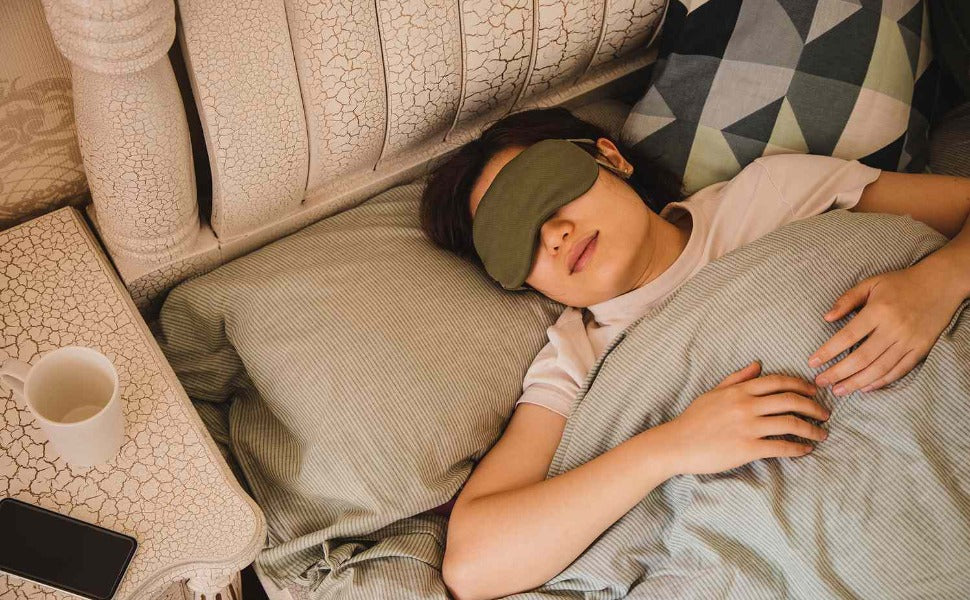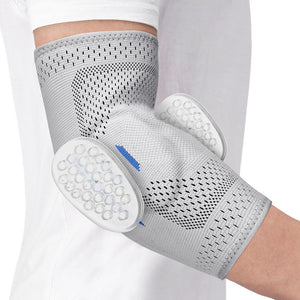Should I Sleep with a Shoulder Compression Brace on

stabilize the shoulder and reduce pain, but it’s essential to adjust its tightness to avoid restricting blood circulation. Side sleepers may benefit from using a supportive pillow to enhance comfort and reduce shoulder pressure.
Benefits of Wearing It
There are, however, certain practical benefits to sleeping while wearing a , especially in instances when one has suffered a shoulder injury or is in the post-recovery stages. A shoulder compression brace primarily serves to offer support and stability to prevent further injury or exacerbation of pain from poor posture at night. These unconscious actions of turning over and applying pressure on the shoulder while sleeping may be quite harmful in cases of inflammation, strains, or other types of injury. The movement of your shoulder is well managed by this brace, which restricts improper movements, hence reducing pain and minimizing the stress on muscles or ligaments.
It also can provide a shoulder compression brace to improve blood circulation and reduce muscle stiffness. Due to light compression from this brace, it will provide the required pressure in the injured area, which can help promote blood flow around the injured area to some extent, thereby accelerating the healing process. For those who have to be confined to the bed for a longer period, the act of putting on a brace can save the shoulders from getting stiff and can avoid each morning's soreness. It offers better protection for one's shoulder and allows it to rest a little more on a night in order to speed up the process of recovery by wearing a shoulder compression brace.
Comfort vs. Pain
The comfort level when wearing a shoulder compression brace is relative among people. Some people may be of the opinion that, in actual fact, wearing one because the support it gives keeps the shoulder in a fixed position, which reduces pain that may arise from turning over. This is particularly helpful for those who have undergone surgery or have sustained a serious injury whereby a brace can prevent painful moments from all unconscious movements during sleep and consequently save them from being woken up needlessly.
Some people find it uncomfortable to wear a brace. This is probably the reason why the compression brace restricts the normal motion of the shoulder, making less flexibility while overturning or changing positions, even producing a sensation of "constraint." This discomfort may be most remarkable for the subjects who used to sleep on their side or change their posture frequently. Besides, comfort also depends on the material of the brace and how tightly one adjusts it. Poor blood circulation caused by a too-tight brace may result in stiff or even numb shoulders. Thus, the right choice of brace and adjustment of its tightness may be important so as not to stray from comfort versus pain in wearing a brace.

Nighttime Tips
To feel as comfortable and efficient as possible while sleeping in a , here are a few tips one can follow. First of all, choose an appropriate pillow. For patients with a shoulder injury, side sleeping may highly increase the discomfort; thus, choosing a moderately high pillow can support the head properly and decrease pressure from the shoulder area. Whenever possible, one should consider the use of a pillow designed to support both sides with the purpose of minimizing the pressure on the shoulders while lying flat.
Keep the tightness of the brace loose before going to sleep. Many people may be used to a tighter fit when it comes to wearing a brace during daytime activities, but nighttime should be another story—the brace should not be too tight; otherwise, that would affect blood circulation and even result in numbness in your shoulder area. Hence, you can just loosen up the brace before going to bed to ensure that the shoulders are supported while the blood flow is smooth.
It is also good to keep the temperature of the room at a moderate level. Most of these shoulder compression braces tend to emit heat, and hence raising this temperature excessively could trigger more sweating, something which would be very uncomfortable. If the temperature is just right, then the brace wouldn't be too cold or hot; hence, the comfort is warranted. These are indeed ways through which you can make sure the sleeping experience at night is relatively comfortable.
When to Avoid
While a F shoulder compression brace may be helpful to many persons during the nighttime, this does not necessarily be the case for everyone. There are instances wherein it is not advisable to wear them when sleeping. First and foremost, these are, in general, not needed for mild conditions of the shoulders wherein serious injury is not called for. In cases when one only suffers from occasional muscle soreness or temporary discomfort brought about by overexertion, symptoms can often be relieved with adequate rest and proper care without having to resort to a brace.
If the injury to the shoulder is in its later recovery stage, where a course of regaining mobility and flexibility has already begun, then the brace may not be so much required anymore. The long-time use of the braces keeps the muscles of the shoulder relaxed without having any autonomous movement, which results in muscle weakening. Thus, this is usually a very crucial period for the restoration of range of motion and strength in the shoulder, so a reduction in dependency on the brace with a gradual increase in activities can have one recover one's shoulder function faster and more completely.
Others, on the other hand, turn around a lot or change positions in sleeping quite frequently, and a brace may simply get in the way or even disrupt sleep quality. In cases when there is absolutely no harm if one isn't obliged to wear it, it would be better to acknowledge one's own needs so that comfort wouldn't be put in jeopardy.
Proper Fit
It is important to make sure that you , because the effectiveness will be directly influenced by the fit. When you purchase it, you will want to pick out the correct size of the brace depending on your shoulder dimensions and other body features, so that it isn't too loose or too tight to effectively offer support and protection. If it is too tight, it can hurt the shoulder and impede blood flow; if it is too loose, it is not stabilizing enough.
Put it on and adjust the straps—the design of the brace will allow you to reach a point where it is stabilizing your shoulder without applying pressure. Some are designed to be more complex and might require several securing straps or auxiliary securing devices. For those, it would be best if one could learn the correct method of putting it on from a doctor or professional to ensure the position and tightness of the brace is ideal.
Cleaning the brace is another very important thing. When worn for a long time, it will build up with sweat and skin oils that will make the brace uncomfortable and unhygienic. Regular cleaning of the brace keeps it clean and prolongs its usable lifetime. You can use warm water and mild detergent for cleaning. Bleach or hot water should not be used to prevent it from affecting the material or function of the brace.
Long-term Effects
The long-time use of a shoulder compression brace may create some effects on the shoulder. If the shoulder is injured, during the beginning periods the brace offers very good support, prevents further injuries, and aids in recovery. In case the use is excessive over a longer period, it may lead to atrophy and weakening of the muscles in the shoulder. This is because the brace assumes some of the supporting role of the shoulder, and as such, shoulder muscles do not exercise enough, something that over time reduces their strength.
Wearing the brace for an extended period could also be expected to affect the mobility of the shoulder joint. If the shoulder remains in one position for a very long period, the flexibility of a joint could be affected and even lead to stiffness. Thus, to avoid any stiffness of the joints, some sort of physical therapy or rehabilitation exercises are recommended along with wearing the brace that would help in regaining normal range of motion.
Braces for patients suffering from shoulder injuries should be worn consistently in the early recovery stages. In mid-to-late recovery stages, brace wear should be gradually reduced while ramping up activity in the shoulder to achieve muscle strength and joint flexibility. This can effectively avoid the long-term adverse effects of the brace.
Doctor’s Advice
The doctor will be in a better position to advise based on the condition of the patient, how serious the injury is, and at which phase of recovery the patient is. In the case of those who have undergone shoulder surgery or severe injuries, doctors advise them on the frequencies of putting on a brace and how long.
Generally, doctors check the shoulder recovery process and advise on the type and how to wear the brace. Depending on the recovery rate, a doctor will always advise on a gradual release from using the braces to give room for the shoulder to revert to its normal movements. A doctor may continue to advise on the use of the brace at night so that the shoulder will be well protected during resting
-
Posted in
Brace














